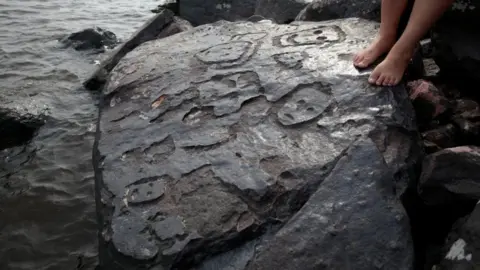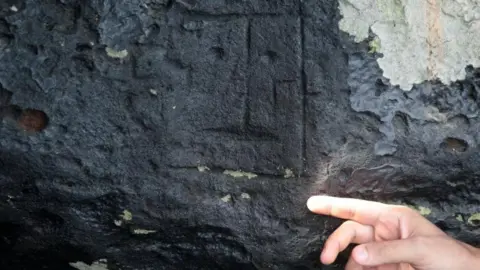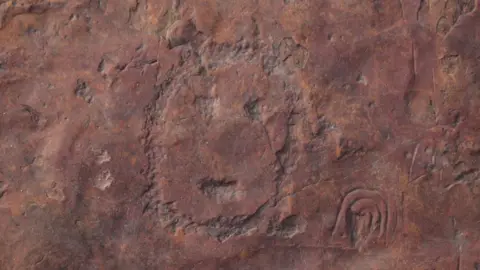Brazil drought reveals ancient rock carvings of human faces
 Reuters
ReutersA drop in water levels of the Amazon has revealed rock carvings which had been mostly submerged since they were carved more than a thousand years ago.
A severe drought means that the human faces carved into rocks on the shore can now be easily spotted.
Some had been sighted during a previous drought but archaeologists say they have been able to locate a greater variety of the carvings this time.
The discovery was made in the city of Manaus, in northern Brazil.
 Reuters
Reuters Reuters
ReutersThey are located on a stretch of shore known as Ponta das Lajes, near where the Rio Negro and the Solimões river flow into the Amazon.
Archaeologist Jaime Oliveira told local media that they were carved by people who lived in the area in pre-Columbian times.
"This region is a pre-colonial site which has evidence of occupation dating back some 1,000 to 2,000 years," he said.
"What we're seeing here are representations of anthropomorphic figures."
 Reuters
ReutersAnother rock has grooves thought to have been used by indigenous people in the area to sharpen their arrows.
The carvings were last seen in 2010, when the water level of the Rio Negro dropped to 13.63m (44.7 ft).
On Sunday, the river's level dropped for the first time to below 13m and on Monday it fell even further to 12.89m.
 EPA
EPAThe Brazilian government attributes the drought to climate change and the El Niño weather phenomenon, which has caused the volume of rainfall in the northern Amazon to fall below the historical average and river levels to drop to near record levels.
